How to Export data from QuickBooks Desktop or Sage 50 Pro/Premium and How to Upload files to your portal
This page shows you how to export your Chart of Accounts and Trial balance from QuickBooks Desktop (QBD) or from Sage 50 Pro/Sage 50 Premium, and then how to upload and import these files to your portal.
The instructions below are for desktop-based versions of QuickBooks and Sage.
If you are accessing QuickBooks or Sage using your web browser or an app on your phone, these instructions are not for you. Please follow the instructions under “Cloud Connections” on the left sidebar of your portal.
Not sure what type of software you have? Visit our Frequently Asked Questions to find out.
Have a different desktop-based software? Check out How to Upload Financial Documents
How to export from QuickBooks Desktop (QBD)
You can export directly from QuickBooks Desktop by following the instructions below:
Chart of Accounts
In the main toolbar at the top of the screen, click 'Lists' → 'Chart of Accounts'
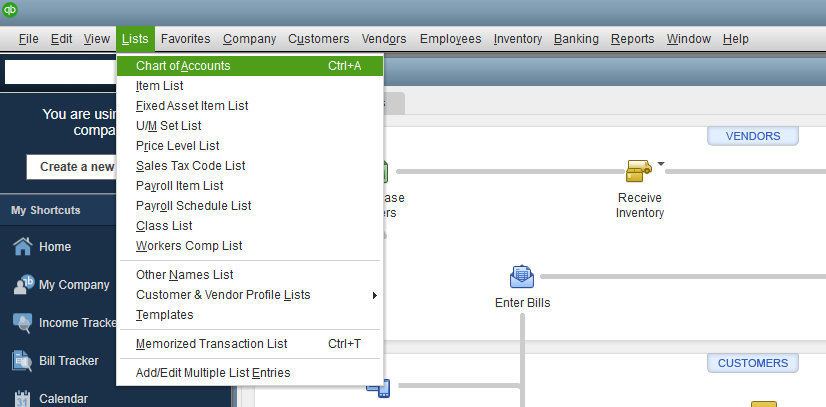
At the bottom of the new 'Chart of Accounts' window there is a 'Reports' button. Click on the arrow next to the 'Reports' button and select 'Account Listing' from the menu that appears.
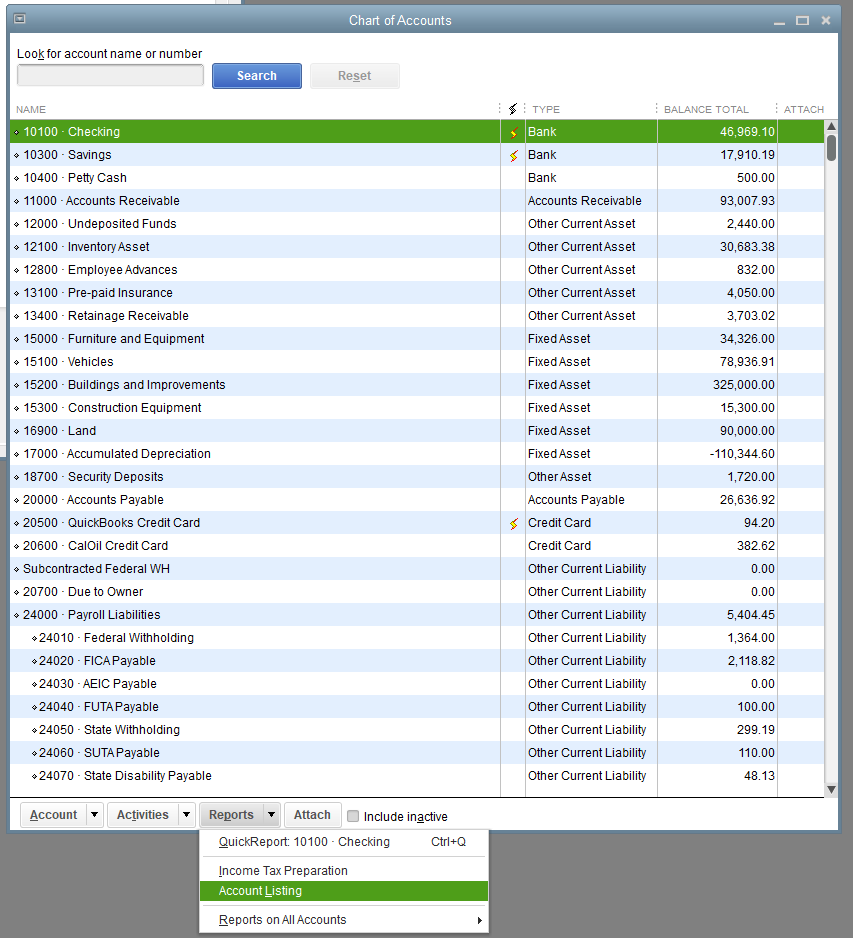
At the top of the new 'Account Listing' window, click on the arrow next to the 'Excel' button and select 'Create New Worksheet'.

Another window will pop up allowing you to name the file and choose the location to save the file to. For the 'Save as type' option, make sure you have selected 'Comma Separated Value (*.csv)'.
Once you click 'Save', exporting is complete, and this newly saved file can be imported into the Boss Insights system as-is.
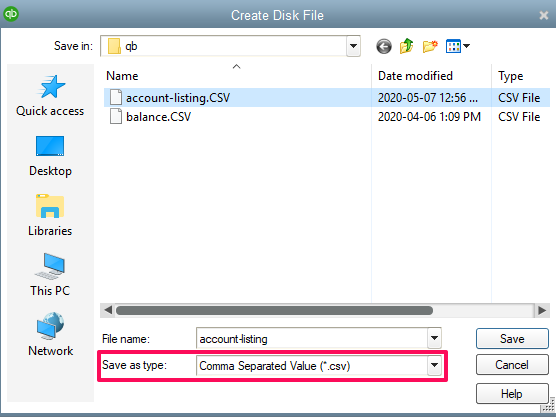
Trial Balance
In the main toolbar at the top of the screen, click 'Reports' → 'Company & Financial' → 'Balance Sheet Detail'
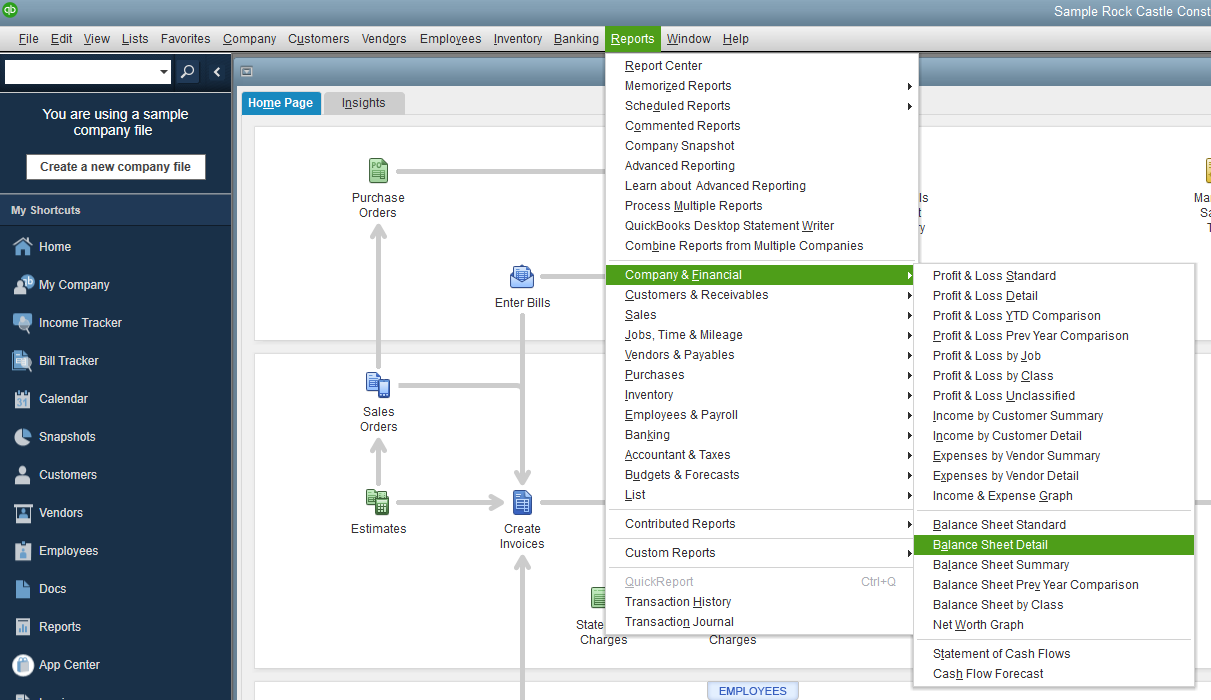
At the top of the new 'Balance Sheet Detail' window, select the appropriate date. Then, click on the arrow next to the 'Excel' button and select 'Create New Worksheet'.

Another window will pop up allowing you to name the file and choose the location to save the file to. For the 'Save as type' option, make sure you have selected 'Comma Separated Value (*.csv)'.
Once you click 'Save', exporting is complete, and this newly saved file can be imported into the Boss Insights system as-is.

You have successfully exported your QuickBooks Desktop (QBD) Chart of Accounts and Trial Balance data. Please proceed to this section.
How to Export from Sage 50 (Pro/Premium) Desktop
You can export directly from Sage 50 Pro/Premium Desktop by following the instructions below:
Chart of Accounts
In the main toolbar at the top of the screen, click ‘Reports' → 'Lists’ → 'Chart of Accounts'
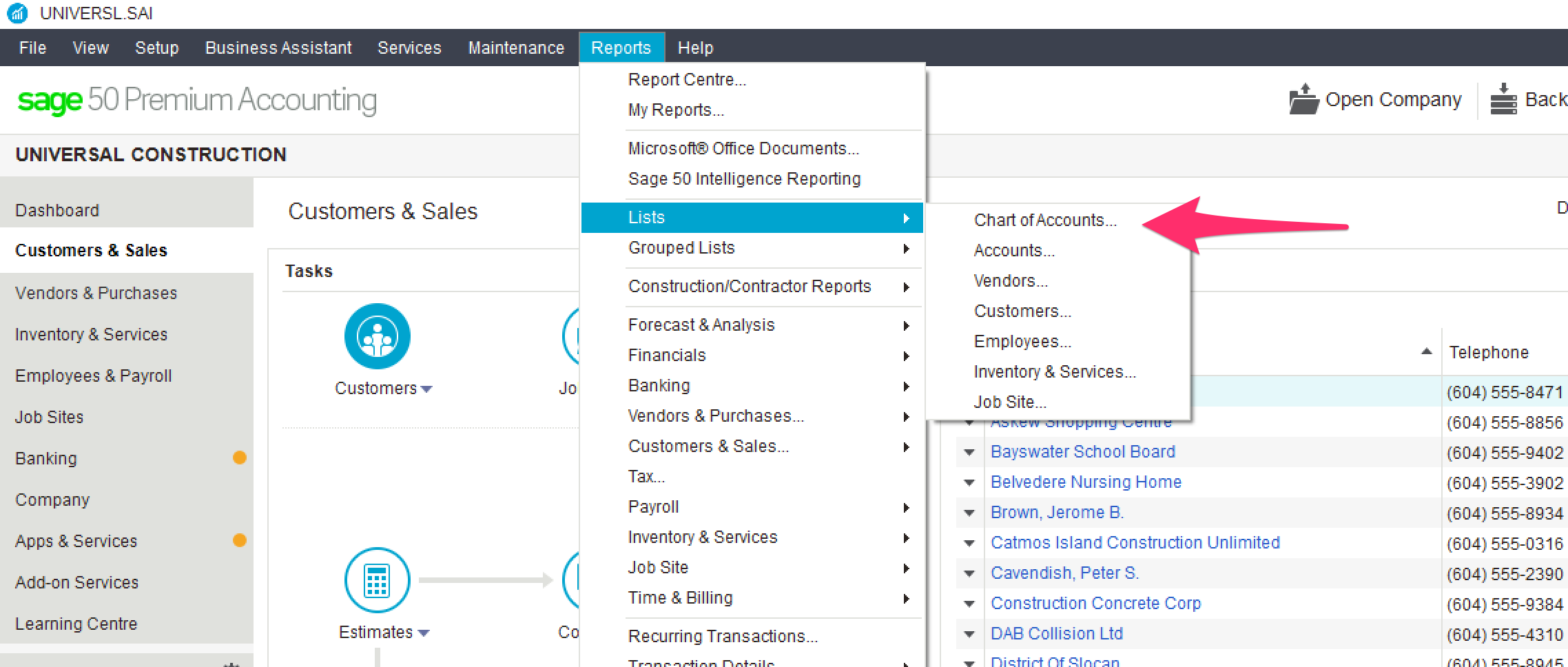
At the bottom of the new 'Chart of Accounts - Modify Report' window there is a 'OK' button. Click on this.
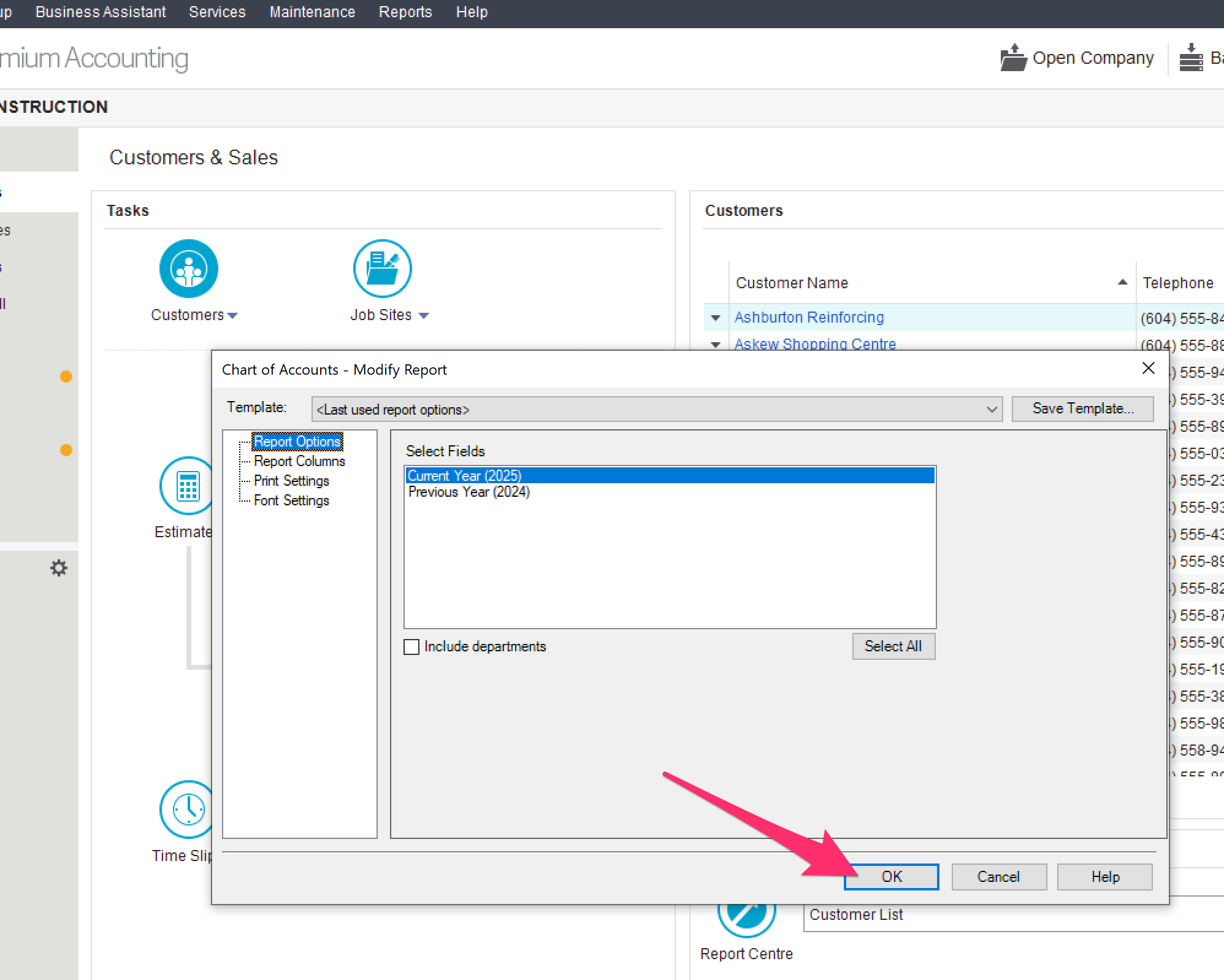
A chart of accounts report appears, click on the “Export” button in the main toolbar. A Export Selection dialog will appear that allows you to save the chart of accounts as a file, select “Comma separated” as the Save as type and then click Save.

Trial Balance
In the main toolbar at the top of the screen, click 'Reports' → 'Financials' → 'Trial Balance'
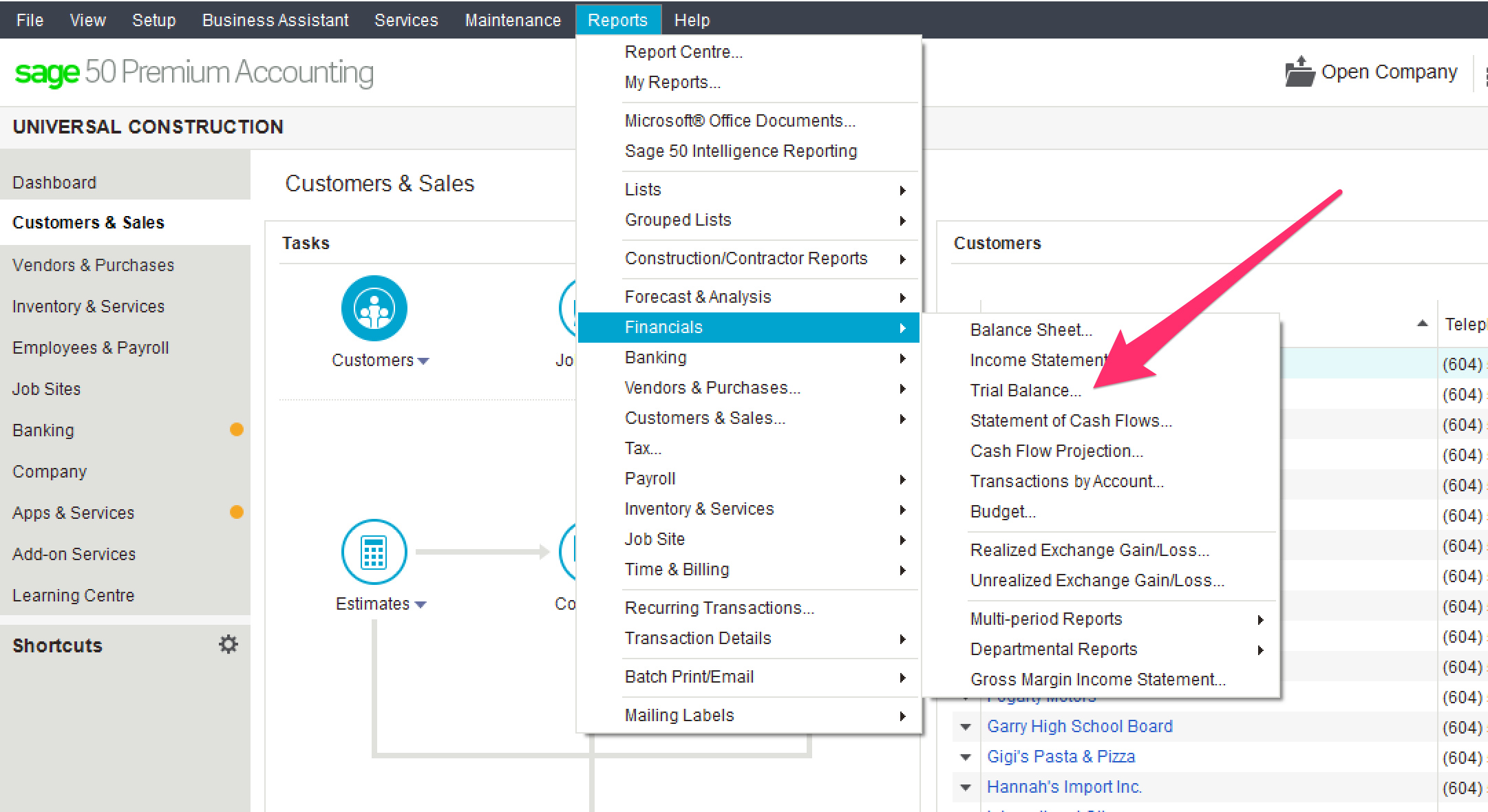
A “Trial Balance - Modify Report” window opens, select the last day of the month for the month you need to create a trial balance for. Click on “OK”.
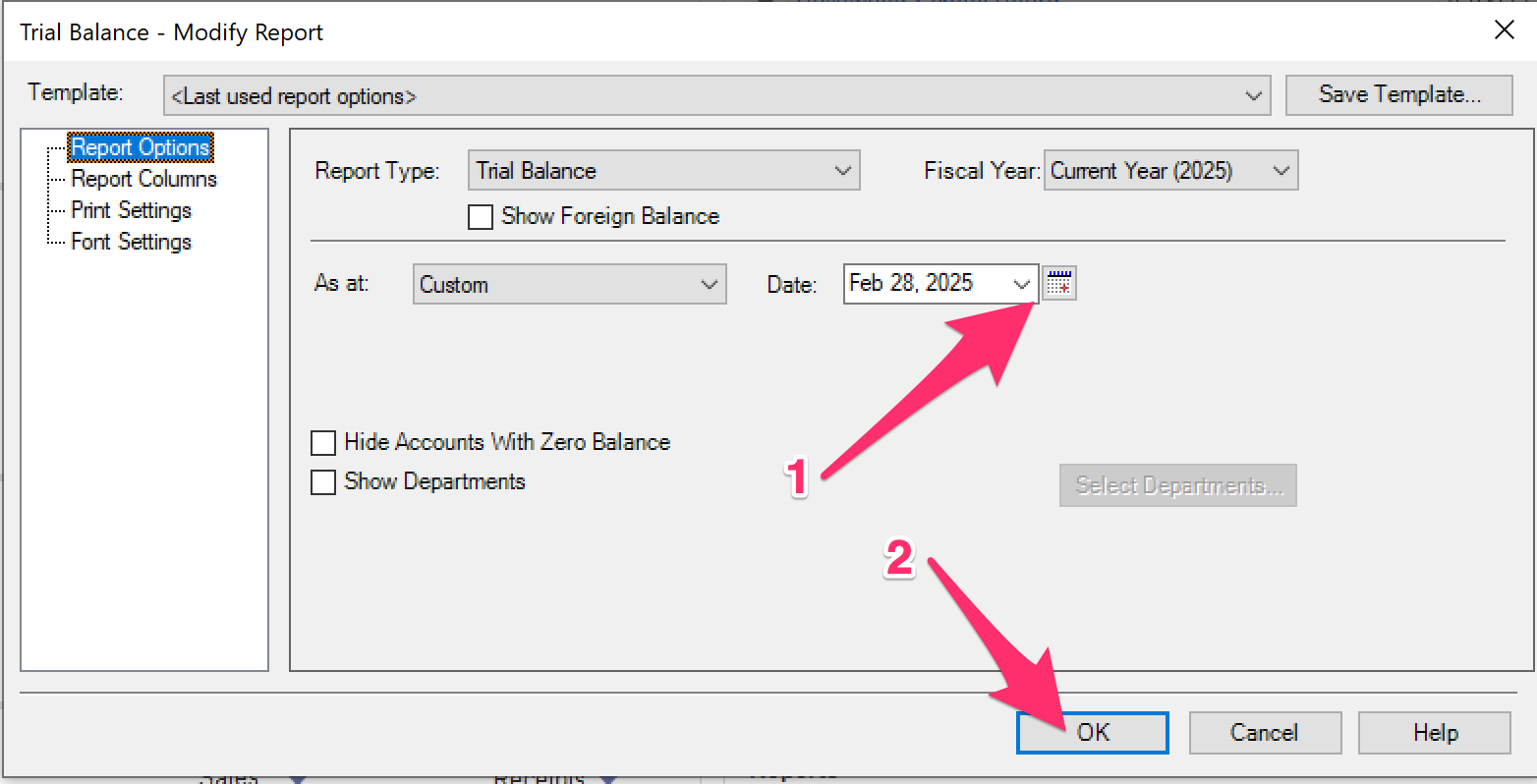
A trial balance report appears, click on the “Export” button in the main toolbar. A Export Selection dialog will appear that allows you to save the trial balance as a file, select “Comma separated” as the Save as type and then click Save.
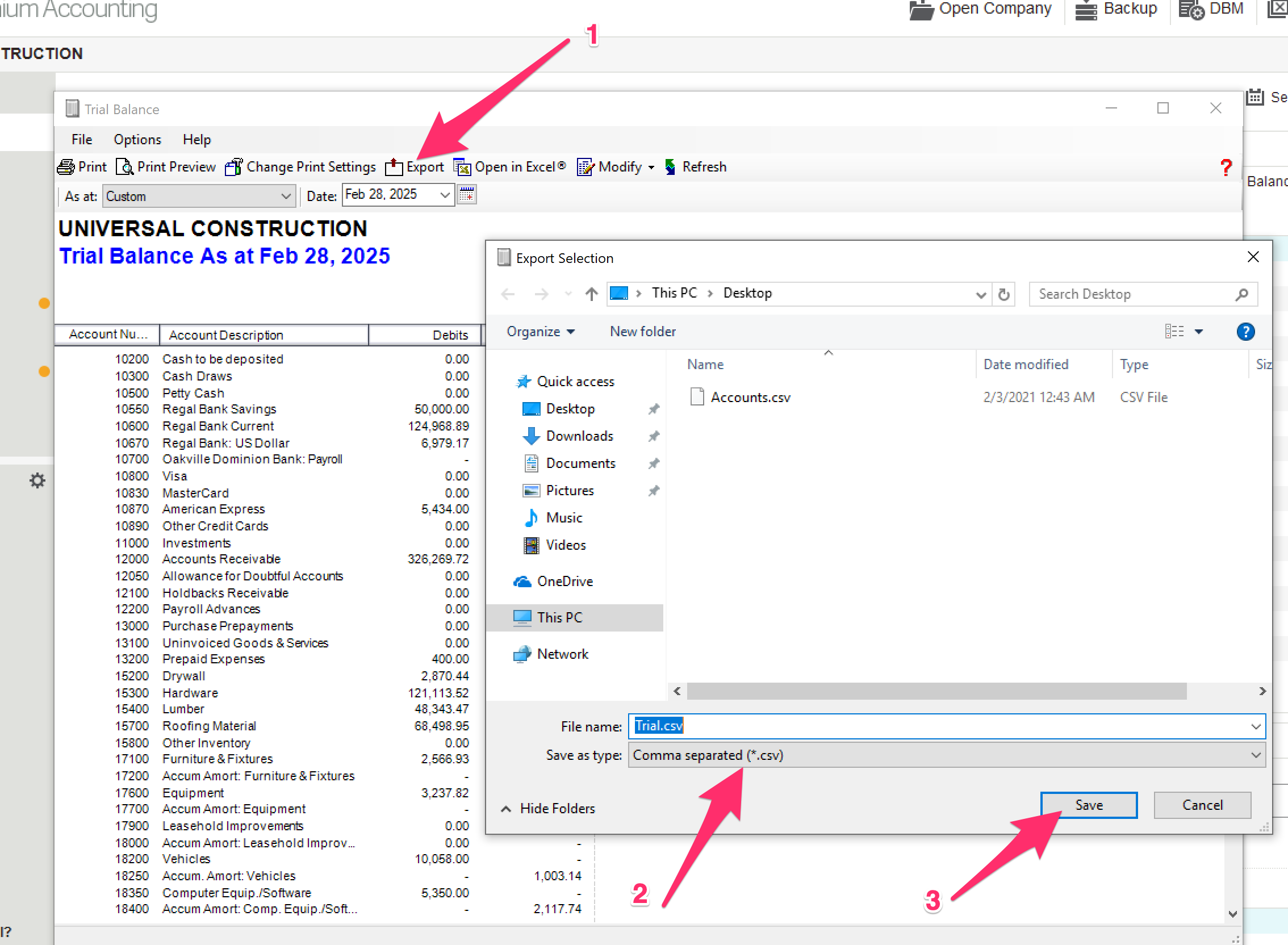
You have successfully exported your Sage 50 Pro/Sage 50 Premium Chart of Accounts and Trial Balance data. Please proceed to the next section.
How to Upload your files to your portal
Note that the following step numbers may vary depending on your Lender but the step to look for is generally called “Upload Files”.
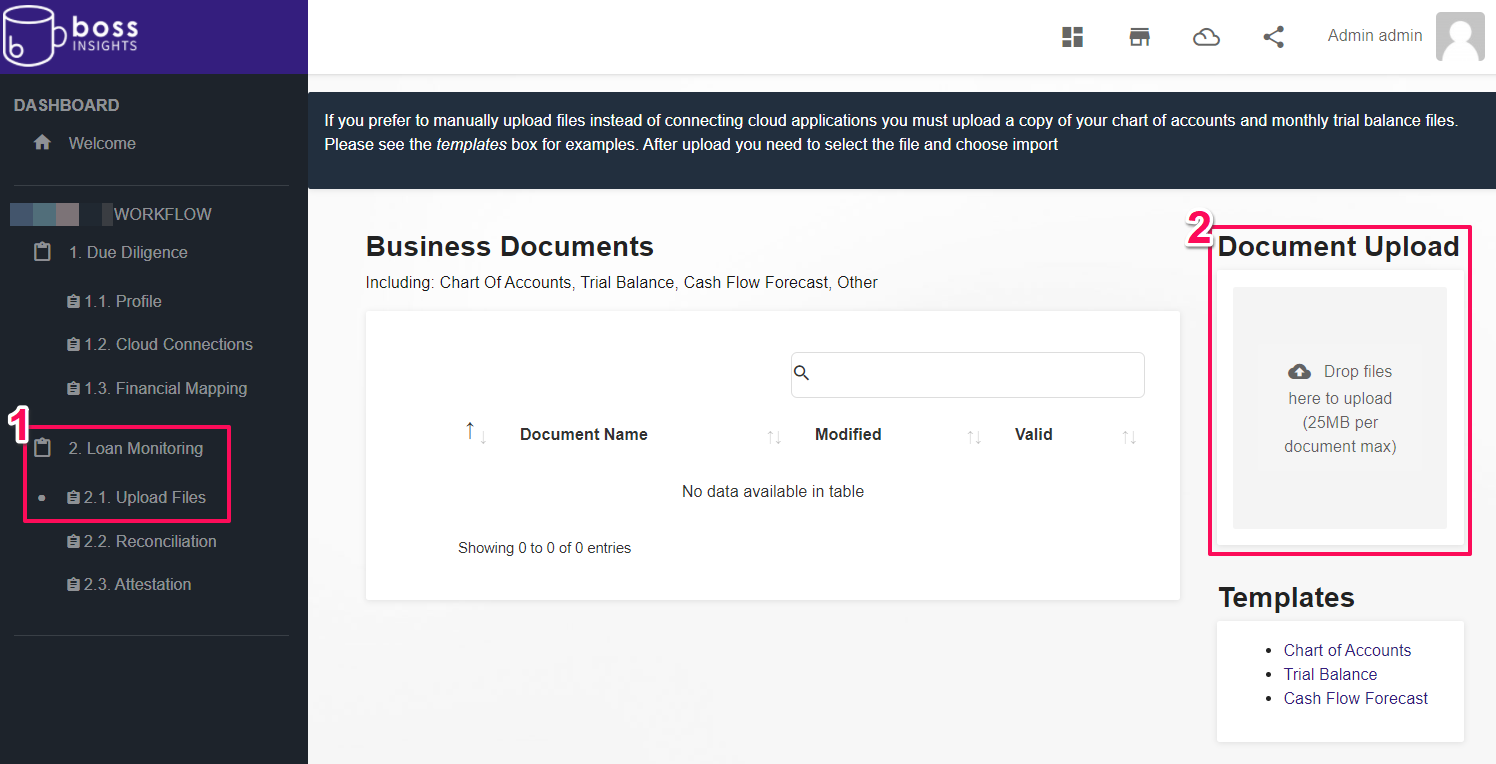
Log in to your account domain and click “2. Loan Monitoring” in the sidebar on the left. This will make the sub-steps appear. Click “2.1 Upload Files”. This will take you to the Business Documents page.
On the Business Documents page, there is a section on the right called “Document Upload”. You can click on this section to open the file explorer and select the documents you wish to upload. You can also drag and drop files into this section to upload them. Upload your Chart of Accounts and monthly Trial Balance CSV files using this section.

Uploaded documents will appear in the list on the left. Each file must now be imported, a process which will parse financial data from the files. Your chart of accounts must be imported before you import your trial balances. Click on a file in the list and the “Document Upload” section on the right will be replaced by a “Document Properties” section.
Edit the “Document Type” and “Valid From” and “Valid Until” dates in the “Document Properties” section. In the screenshot example, I have changed the document type of my June trial balance to “Trial Balance”, and I have set the dates to the first and last days of June.
If you have changed the “Document Type” appropriately, a green “Import” button will appear. Confirm that the document type and dates are correct, then click the “Import” button.
How to Map your imported chart of accounts:
Note that the following step numbers may vary depending on your Lender but the step to look for is generally called “Financial Mapping”
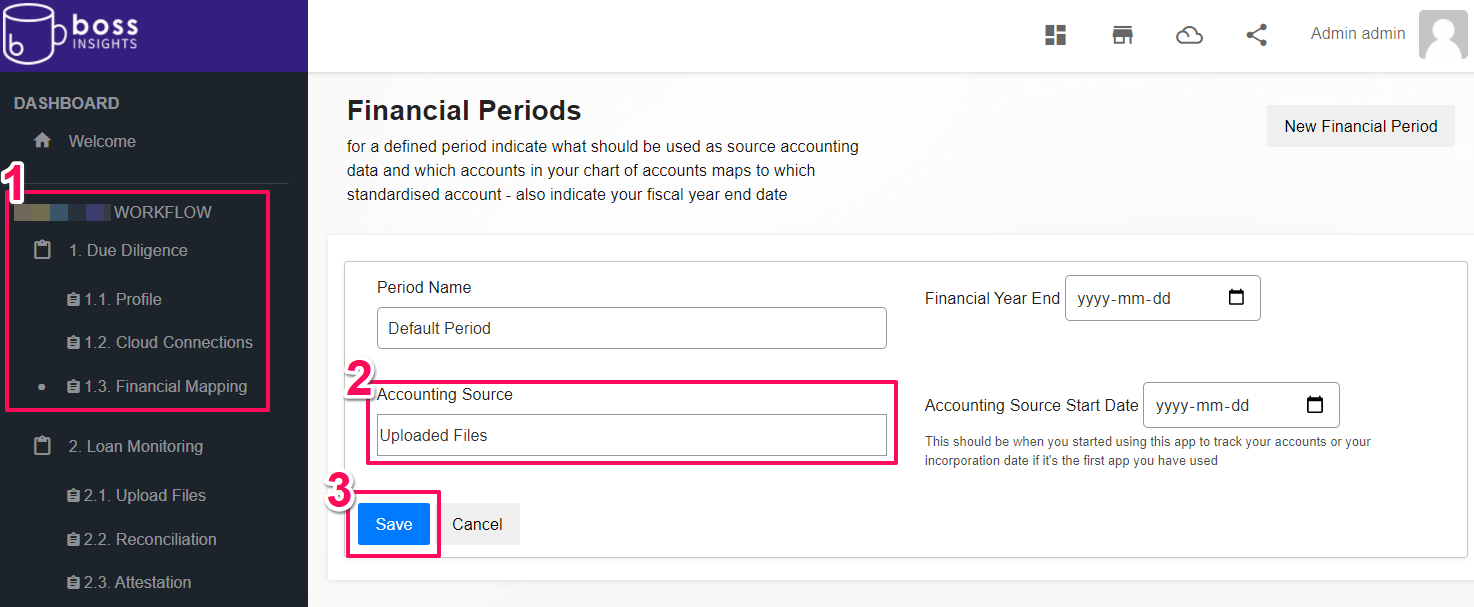
Log in to your Boss Insights domain and click “1. Due Diligence” in the sidebar on the left. This will make the sub-steps appear. Click “1.3 Financial Mapping”. This will take you to the Financial Periods page.
If you have not created a Financial Period on this page before, there will be a Default Period that you can edit. You can also create a new financial period using the button in the top right. For your imported chart of accounts file to be used for this Financial Period, “Accounting Source” must be set to “Uploaded Files”.
Fill out the other three fields. The “Accounting Source Start Date” should be at or before the start date of your earliest imported trial balance. Once you have filled out the fields, click “Save”.
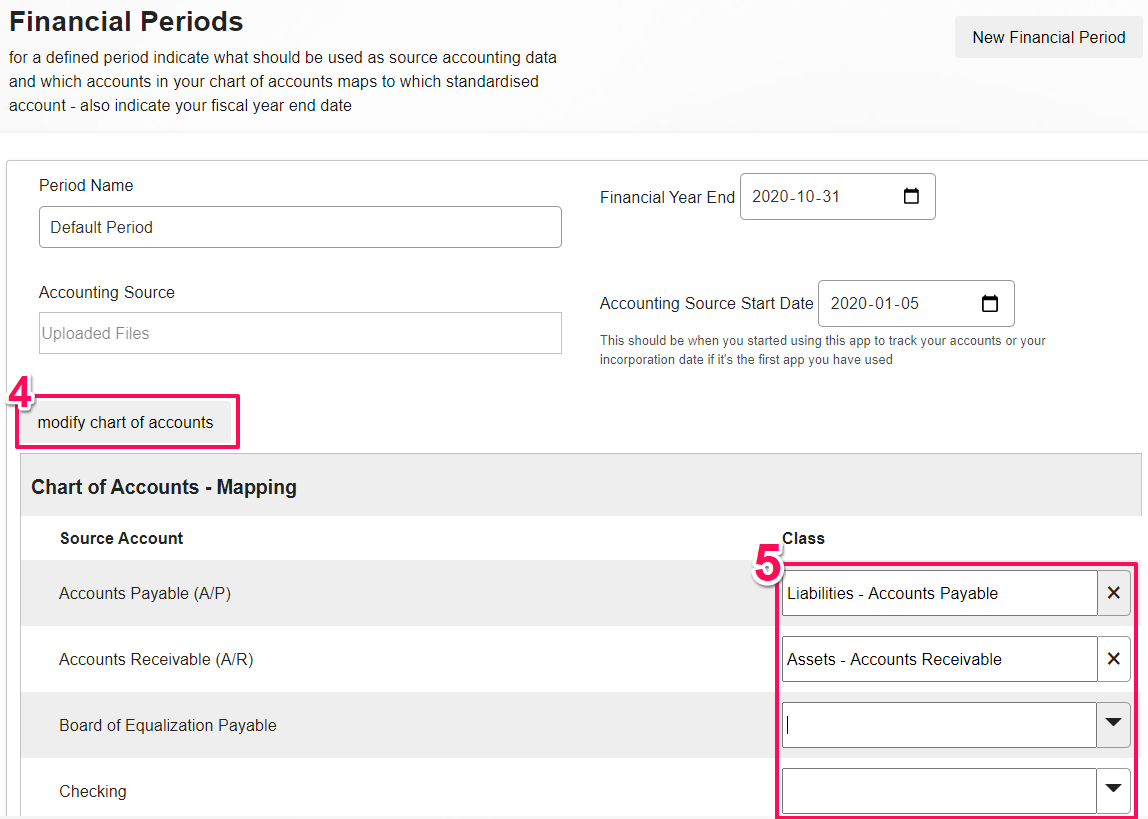
After you save there is a new button that says “modify chart of accounts”. Click on this button to show the “Chart of Accounts - Mapping” table. This table is used to map your chart of accounts to the Lender standard chart of accounts. The “Source Account” column on the left is populated by the accounts from your imported chart of accounts CSV file.
The “Class” column on the right is used to set which Lender account you want to map your Source Account to. You can use the dropdown arrow to select from our standard chart of accounts list, or you can type into the text input and you will be suggested accounts using auto-complete. Once you have mapped all accounts, click “Save” and you are finished! You have successfully shared your financial information with your Lender. Your Lender can now view your information on the “Company Insights” page of their Boss Insights domain.
